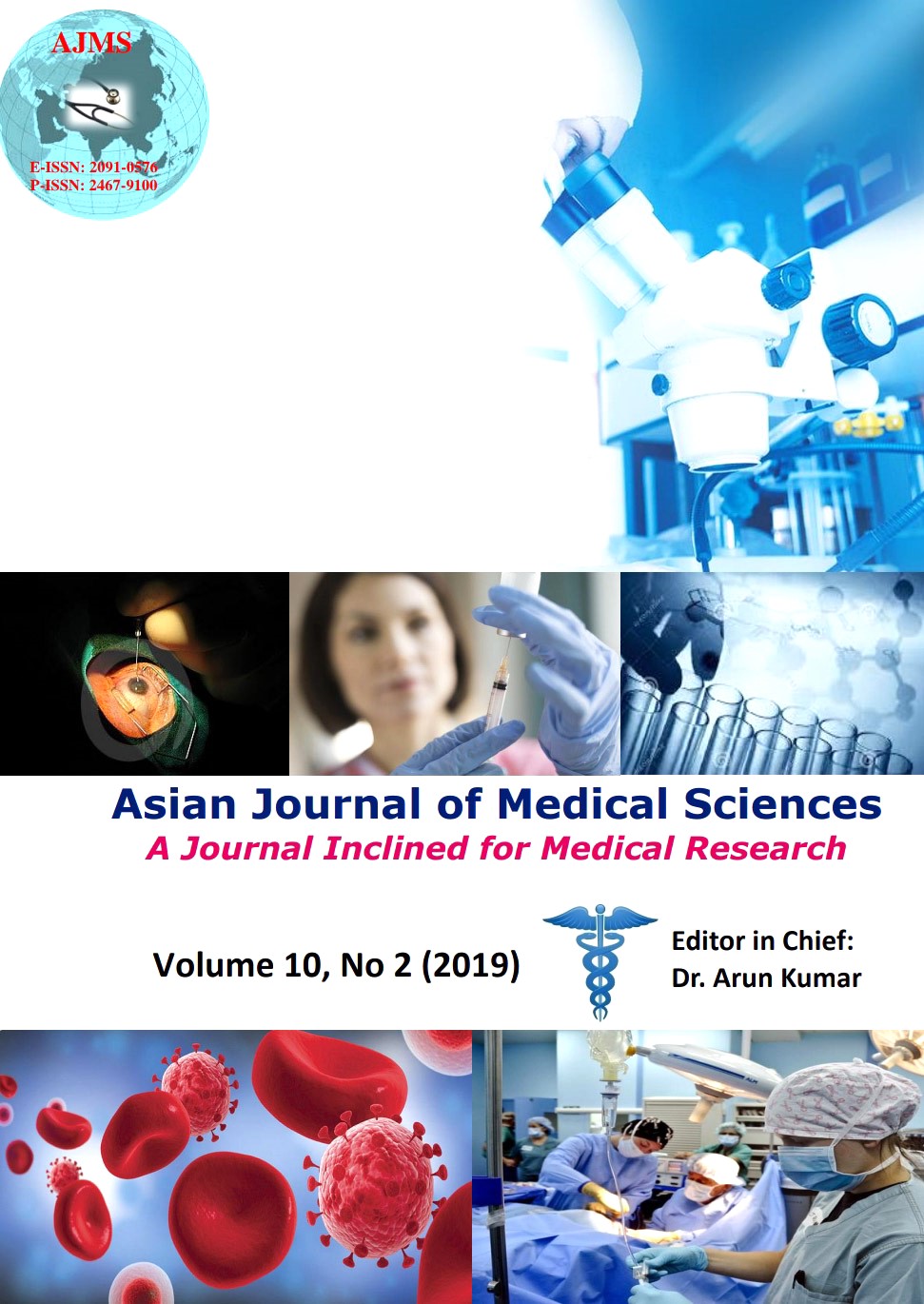Burden of multidrug resistant respiratory pathogens in intensive care units of tertiary care hospital
Keywords:
ICU, Drug resistance, Carbapenamase, MBL, KPC, TigecyclineAbstract
Background: Lower respiratory tract infections are one of the most common infections among the patients in Intensive Care Units (ICUs). Admission in ICUs and use of life supporting devices increase the risk of infection with multidrug resistant pathogens.
Aims and Objectives: This study was aimed to determine the prevalence and antibiograms ofthe bacterial pathogens causing lower respiratory tract infectionsamong patients of ICUs.
Materials and Methods: A total of 184 specimens from patients admitted in ICUswith lower respiratory tract infections were included in this study. Isolation, identification and antibiotic susceptibility testing of the isolates was performed by standard microbiological techniques. Carbapenamase detection was performed by modified Hodge test method.Detection of metallo beta lactamase (MBL) was tested by imipenem and imipenem/EDTA disc. Detection of Klebsiellapneumoniaecarbapenamase (KPC) was performed by imipenem and imipenem/phenyl boronic acid.
Results: Out of 184 samples, 131 showed significant growth of bacterial pathogens. Acinetobacter species (42.6%), Staphylococcus aureus (16.9%) and Pseudomonasaeruginosa(13.9%)were the three most common isolates. Out of 22 imipenem resistant isolates of Acientobacter species, 9 were KPC producer, 4 were MBL producers and 3 isolates were positive for MBL and KPC both. Among the Acinetobacter species, 5.1% isolates were resistant to tigecycline and colistin. One isolate of Pseudomonas aeruginosa was positive for MBL.
Conclusions:High prevalence of multidrug resistant bacteria in ICUs was recorded. Gram negative bacilli were predominantly associated with LRTI among ICU patients;Acinetobacterspecies being most common isolate. Detection of carbapenamase among the Acinetobacterand emergence of tigecycline resistancelimits the therapeutic options.Regular monitoring of such resistant isolates would be important for managing infection control in critical units.
Downloads
Downloads
Published
How to Cite
Issue
Section
License
Authors who publish with this journal agree to the following terms:
- The journal holds copyright and publishes the work under a Creative Commons CC-BY-NC license that permits use, distribution and reprduction in any medium, provided the original work is properly cited and is not used for commercial purposes. The journal should be recognised as the original publisher of this work.
- Authors are able to enter into separate, additional contractual arrangements for the non-exclusive distribution of the journal's published version of the work (e.g., post it to an institutional repository or publish it in a book), with an acknowledgement of its initial publication in this journal.
- Authors are permitted and encouraged to post their work online (e.g., in institutional repositories or on their website) prior to and during the submission process, as it can lead to productive exchanges, as well as earlier and greater citation of published work (See The Effect of Open Access).




